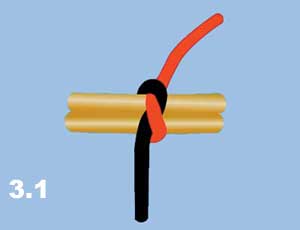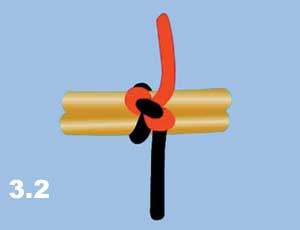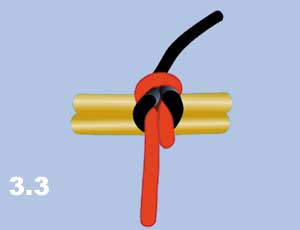Types of Surgical Knots #
Surgeons generally use four basic knots:
Simple Knot. An incomplete, one-unit knot (Figure 3.1).

Granny Knot. A two-unit knot that is completed by repeating identical steps. It is a sliding knot (slips under pressure) and therefore should only be used for purposes such as approximation of high tension wounds (e.g. lateral thoracotomy) and should be completed with a third mirror-image knot that makes it square (Figure 3.2).

Square Knot. A two-unit knot that is completed with two mirror-image simple knots. This is a very strong knot and is by far the knot most often used in surgery (Figure 3.3).

Surgeons or Friction Knot. The first unit of this knot is a double loop and the second unit is a single loop mirror-image. It is used as a tension tie and is a very safe technique for beginners (Figure 3.4).

NB: It is always preferable to make three or more knots depending on the quality of the material and size of the suture. Smaller-sized sutures and synthetic materials need more knots. Generally, use three knots for silk, 4-5 knots for synthetic absorbable, and six knots for synthetic monofilament non-absorbable materials.
